《Transfer Pricing and the Arm's Length Principle in International Tax Law》
| 作者 | Jens Wittendorff 编者 |
|---|---|
| 出版 | Kluwer Law International |
| 参考页数 | 882 |
| 出版时间 | 没有确切时间的资料 目录预览 |
| ISBN号 | 9789041132703;9041132708 — 求助条款 |
| PDF编号 | 812920698(仅供预览,未存储实际文件) |
| 求助格式 | 扫描PDF(若分多册发行,每次仅能受理1册) |
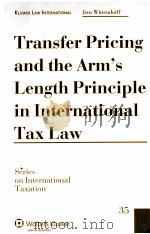
Part Ⅰ Introduction1
Chapter 1 The Subject, Definitions, Methodology, and Plan for the Book3
1.1. The Subject3
1.1.1. Transfer Pricing3
1.1.2. The Arm’s Length Principle6
1.1.3. Scope of the Subject11
1.2. The Methodology and Material13
1.3. Definitions and Terminology16
1.3.1. General16
1.3.2. Adjustments16
1.3.2.1. Transfer Pricing Adjustment16
1.3.2.2. Attribution of Income Adjustment17
1.3.2.3. Transactional Adjustment17
1.3.3. Transfer Pricing Adjustments17
1.3.4. The Arm’s Length Test18
1.3.5. Economies of Integration19
1.4. The Plan for the Book20
Part Ⅱ The Legal Basis for the Arm’s Length Principle21
Chapter2 U.S.Tax Law23
2.1. The Sources of Law in U.S.Tax Law23
2.1.1. General23
2.1.2. Legislation24
2.1.3. Administrative Regulations26
2.1.3.1. General26
2.1.3.2. Regulations26
2.1.3.3. Other Administrative Rules28
2.1.4. The Court System30
2.2.Historical Development31
2.2.1. 1917-1960 Domestic Transactions31
2.2.2. 1960-1968 Section 482 Regulations33
2.2.3. 1966 Internationalization of the Section 482 Regulations37
2.2.4. 1960-1986 Outbound Transactions39
2.2.5. 1986 CWI Standard42
2.2.6. 1988 White Paper43
2.2.7. 1992-1994 Section 482 Regulations44
2.2.8. 1982-2005 Inbound Transactions46
2.2.9. 2000-2009 Outbound Transactions51
2.3.Section 48254
2.3.1. General54
2.3.2. The Purpose of Section 48254
2.3.3. Application of Section 48255
2.3.3.1. Law55
2.3.3.2. Facts56
2.3.3.2.1. Information56
2.3.3.2.2. Burden of Proof57
2.3.3.3. Subsumption61
2.3.4 Legal Conditions of Section 48263
2.3.4.1. Taxpayers63
2.3.4.2. Control65
2.3.4.3. Transactions67
2.3.4.4. Allocation norm68
2.3.4.5. Causality70
2.3.5. Legal Consequences of Section 48270
2.3.5.1. Primary Adjustment70
2.3.5.2. Corresponding Adjustment72
2.3.5.3. Secondary Adjustment72
2.4. Tax Treaties73
2.4.1. General73
2.4.2. Historical Development75
2.4.3. U.S.Model Tax Convention79
2.4.3.1. General79
2.4.3.2. Article 980
Chapter 3 The OECD83
3.1. Introduction to the OECD83
3.2. Historical Development84
3.2.1. The League of Nations84
3.2.1.1. Introduction85
3.2.1.2. 1921-1927, 1927 Draft Model85
3.2.1.3. 1928-1929, 1928 Model87
3.2.1.4. 1930-1933, The Carroll Report89
3.2.1.5. 1933-1939, 1933 and 1935 Models92
3.2.1.6. 1939-1946, 1943 and 1946 Models94
3.2.2. OECD95
3.2.2.1. 1956-1963, 1963 Model96
3.2.2.2. 1963-1976, 1976 Guidelines for Multinational Enterprises98
3.2.2.3. 1977, 1977 Model99
3.2.2.4. 1974-1979, 1979 OECD Report100
3.2.2.5. 1980-1984, 1984 OECD Report101
3.2.2.6. 1984-1986, Unitary Taxation102
3.2.2.7. 1987, 1987 OECD Thin Capitalization103
3.2.2.8. 1992, 1992 Model103
3.2.2.9. 1992-1993, The Task Force Reports104
3.2.2.10. 1992-1997, OECD Transfer Pricing Guidelines105
3.2.2.11. 1997-2009109
3.3. Article 9 of the OECD Model111
3.3.1. General111
3.3.2. Interpretation of Article 9112
3.3.2.1. General112
3.3.2.2. The Vienna Convention on the Law of Treaties113
3.3.2.2.1. General113
3.3.2.2.2. Primary Means of Interpretation115
3.3.2.2.3. Supplementary Means of Interpretation119
3.3.2.2.4. Multilingual Treaties121
3.3.2.3. The OECD Commentaries122
3.3.2.3.1. General122
3.3.2.3.2. Legal Status123
3.3.2.3.3. Static or Dynamic Interpretation128
3.3.2.4. Domestic Legislation131
3.3.2.4.1. General131
3.3.2.4.2 Autonomous or Domestic Law Interpretation132
3.3.2.4.3. Domestic Law of the Source State or of the State Applying the Treaty137
3.3.2.4.4. Domestic Tax Law or Other Law141
3.3.2.4.5 Static or Dynamic Interpretation141
3.3.2.5.Foreign Court Decisions143
3.3.3. The Purpose of Article 9145
3.3.3.1.General146
3.3.3.2.Economic Double Taxation148
3.3.3.3.Transfer Pricing Adjustments149
3.3.3.4.Attribution of Income Adjustments151
3.3.3.5.Transactional Adjustments151
3.3.3.5.1. General152
3.3.3.5.2. Thin Capitalization161
3.3.3.5.3. CWI Standards166
3.3.3.5.4. Business Restructurings169
3.3.4. Relationship between Article 9 and other Articles of the OECD Model177
3.3.4.1.General177
3.3.4.2.Article 10 and Article 21183
3.3.4.3.Article 11(6) and Article 12(4)184
3.3.5. Relationship between Article 9(1) and Domestic Tax Law190
3.3.5.1.Does Article 9(1) Broaden the Right to Tax under Domestic Law?190
3.3.5.2.Does Article 9(1) Restrict the Right to Tax under Domestic Law?193
3.3.5.2.1. General193
3.3.5.2.2. Allocation Norm195
3.3.5.2.3. Personal Scope199
3.3.6. Legal Conditions of Article 9(1)203
3.3.6.1.Subjective Scope203
3.3.6.1.1. General203
3.3.6.1.2. Enterprise203
3.3.6.1.3. Resident205
3.3.6.2.Control213
3.3.6.2.1. General213
3.3.6.2.2. Autonomous or Domestic Law Interpretation213
3.3.6.2.3. Control Requirement215
3.3.6.2.4. Concept of Control216
3.3.6.2.5. Direct/Indirect and Vertical/Horizontal Relations221
3.3.6.3. Objective Scope222
3.3.6.3.1. General222
3.3.6.3.2. Unilateral and Bilateral Transactions226
3.3.6.3.3. Formal Requirements227
3.3.6.3.4. Acts and Omissions230
3.3.6.3.5. Direct/Indirect233
3.3.6.4. Conditions235
3.3.6.5. Allocation Norm236
3.3.6.6. Income Reduction237
3.3.6.7. Causality239
3.3.7.Legal Consequences of Article 9240
3.3.7.1. Primary Adjustment240
3.3.7.2. Corresponding Adjustment241
3.3.7.3. Secondary Adjustment244
3.4. The OECD Transfer Pricing Guidelines246
Chapter 4 Other International Law249
4.1. United Nations250
4.2. European Union252
4.2.1. Primary Legislation253
4.2.1.1.General253
4.2.1.2.Fundamental Freedoms253
4.2.1.2.1. General253
4.2.1.2.2. Primary Adjustment257
4.2.1.2.3. Corresponding Adjustment272
4.2.1.2.4. Secondary Adjustment275
4.2.1.3.State Aid275
4.2.2. Secondary Legislation276
4.2.3. Joint Transfer Pricing Forum282
4.3.World Trade Organization284
4.3.1. General284
4.3.2. Arm’s Length Principle284
4.4.Customary International Law287
4.4.1. General287
4.4.2. Arm’s Length Principle288
Part Ⅲ The Concept of the Arm’s Length Principle291
Chapter 5 Introduction293
Chapter 6 U.S.Tax Law295
6.1. General295
6.2. Controlled Transaction297
6.3. Reference Transaction298
6.4. Valuation302
Chapter 7 Discourse: German Tax Law303
7.1. General303
7.2. Controlled Transactions307
7.3. Reference Transactions307
7.4. Valuation311
Chapter 8 Article 9(1) of the OECD Model313
8.1. General313
8.2. Controlled Transactions313
8.3. Reference Transactions314
8.4. Valuation316
Part Ⅳ General Arm’s Length Rules319
Chapter 9 Recognition of Controlled Transactions321
9.1. U.S.Tax Law321
9.1.1. General321
9.1.2. Economies of Integration326
9.1.3. Realistic Alternatives329
9.2. The OECD Guidelines332
9.2.1. General332
9.2.2. Economies of Integration334
9.2.3. Realistic Alternatives341
Chapter 10 Aggregated and Separate Arm’s Length Tests343
10.1. Aggregated Arm’s Length Tests343
10.1.1. U.S.Tax Law343
10.1.2. The OECD Guidelines348
10.1.3. Discourse: German Tax Law354
10.2. Separate Arm’s Length Tests357
10.2.1. U.S.Tax Law357
10.2.2. The OECD Guidelines360
Chapter 11 Set-Off365
11.1.U.S.Tax Law366
11.2.The OECD Guidelines367
Chapter 12 Multiple Year Analyses375
12.1.U.S.Tax Law375
12.1.1. General375
12.1.2. Losses377
12.1.3. Dynamic or Static Arm’s Length Tests378
12.1.4. Prospective or Retrospective Arm’s Length Tests379
12.2.The OECD Guidelines379
12.2.1. General379
12.2.2. Losses382
12.2.3. Dynamic or Static Arm’s Length Tests384
12.2.4. Prospective or Retrospective Arm’s Length Tests388
Chapter 13 The Comparability Requirement393
13.1.The Comparability Standard393
13.1.1. U.S.Tax Law393
13.1.2. The OECD Guidelines396
13.2.Internal and External Reference Transactions397
13.3.Comparability Factors397
13.3.1. The Property or Services398
13.3.2. The Functional Analysis399
13.3.3. The Functions400
13.3.4. Risks403
13.3.4.1. General403
13.3.4.2. Risk Allocation407
13.3.4.2.1.U.S.Tax Law407
13.3.4.2.2.The OECD Guidelines411
13.3.5. Assets417
13.3.6. Contractual Terms418
13.3.6.1. General418
13.3.6.2. Recognition of Contractual Terms419
13.3.6.2.1.U.S.Tax Law419
13.3.6.2.2.The OECD Guidelines421
13.3.6.3. Volume423
13.3.6.4. Long-term Contracts426
13.3.7. Economic Circumstances428
13.3.7.1. General428
13.3.7.2. Geographic Market Differences428
13.3.7.3. Location Savings434
13.3.7.4. Market Form438
13.3.7.5. Bargaining Position440
13.3.8.Business Strategies442
13.4. Irregular Transactions446
Chapter 14 Legislative Restrictions449
14.1. U.S.Tax Law449
14.2. The OECD Guidelines454
Chapter 15 Arm’s Length Range459
15.1. U.S.Tax Law459
15.2. Discourse: German Tax Law462
15.3. The OECD Guidelines472
Part Ⅴ The Special Arm’s Length Rules475
Chapter 16 Services477
16.1. General477
16.2. The Definition of Services478
16.2.1.General478
16.2.1.1.U.S.Tax Law478
16.2.1.2.The OECD Guidelines479
16.2.2.The Activity Test480
16.2.2.1.U.S.Tax Law480
16.2.2.2.The OECD Guidelines481
16.2.3.The Benefit Test484
16.2.3.1.General485
16.2.3.1.1.U.S.Tax Law485
16.2.3.1.2.The OECD Guidelines487
16.2.3.2.Shareholder Activities488
16.2.3.2.1.U.S.Tax Law488
16.2.3.2.2.The OECD Guidelines495
16.2.3.3.Duplicative Activities499
16.2.3.3.1. U.S.Tax Law499
16.2.3.3.2.The OECD Guidelines500
16.2.3.4.Indirect Benefit501
16.2.3.4.1.U.S.Tax Law501
16.2.3.4.2.The OECD Guidelines502
16.2.3.5.Passive Association503
16.2.3.5.1. U.S.Tax Law503
16.2.3.5.2.The OECD Guidelines506
16.3.Payment Form509
16.3.1.U.S.Tax Law509
16.3.1.1. Direct/Indirect Payment509
16.3.1.2. Contingent Payment512
16.3.2.The OECD Guidelines514
16.3.2.1. Direct/Indirect Payment514
16.3.2.2. Contingent Payment521
16.4.Valuation521
16.4.1.U.S.Tax Law521
16.4.1.1. General521
16.4.1.2. Arm’s Length Price or Cost-Only Price524
16.4.2.The OECD Guidelines527
16.4.2.1. General527
16.4.2.2. Arm’s Length Price or Cost-Only Price529
Chapter 17 Cost Sharing537
17.1.General537
17.2.The Relationship between the General Arm’s Length Rules and the Cost Sharing Rules540
17.2.1. U.S.Tax Law540
17.2.2. The OECD Guidelines541
17.3.The Definition of Cost Sharing542
17.3.1. U.S.Tax Law542
17.3.2. The OECD Guidelines545
17.4.The Participants546
17.4.1. U.S.Tax Law546
17.4.2. The OECD Guidelines547
17.5.Cost Contributions548
17.5.1. U.S.Tax Law548
17.5.1.1. General548
17.5.1.2. Costs548
17.5.1.3. Methodology551
17.5.2. The OECD Guidelines552
17.5.2.1. General552
17.5.2.2. Costs552
17.5.2.3. Methodology554
17.6.Buy-In Payments555
17.6.1. U.S.Tax Law555
17.6.1.1. General555
17.6.1.2. PCT557
17.6.1.2.1.General557
17.6.1.2.2.Platform Contributions558
17.6.1.2.3.Terms of a PCT564
17.6.1.3.Supplementary Guidance on Transfer Pricing Methods566
17.6.1.3.1.General566
17.6.1.3.2.Discount Rates568
17.6.1.3.3.Realistic Alternatives570
17.6.1.3.4.Investor Model572
17.6.1.4.Transfer Pricing Methods576
17.6.1.4.1.General576
17.6.1.4.2.Comparable Uncontrolled Transaction Method576
17.6.1.4.3.Income Method577
17.6.1.4.4.Acquisition Price Method582
17.6.1.4.5.Market Capitalization Method583
17.6.1.4.6.Residual Profit Split Method584
17.6.1.4.7.Unspecified Methods586
17.6.2. The OECD Guidelines586
17.7.Changes in Participation586
17.7.1. U.S.Tax Law586
17.7.2. The OECD Guidelines587
17.8.Adjustments587
17.8.1. U.S.Tax Law587
17.8.1.1. Transfer Pricing Adjustments587
17.8.1.2. Transactional Adjustments589
17.8.1.3. Periodic Adjustments589
17.8.2. The OECD Guidelines591
17.8.2.1. Transfer Pricing Adjustments591
17.8.2.2. Transactional Adjustments591
Chapter 18 Intangibles593
18.1.General593
18.2.Defition of Intangibles596
18.2.1. General596
18.2.2. U.S.Tax Law596
18.2.2.1. General596
18.2.2.2. Application of the Definition601
18.2.3. Discourse: German Tax Law610
18.2.4. The OECD Guidelines615
18.2.4.1. General615
18.2.4.2. Application of the Definition619
18.3.Ownership of Intangibles624
18.3.1. General624
18.3.2. U.S.Tax Law625
18.3.3. The OECD Guidelines629
18.4.Joint Development of Intangibles631
18.4.1. General631
18.4.2. U.S.Tax Law632
18.4.3. OECD Guidelines641
18.5.Valuation643
18.5.1. U.S.Tax Law644
18.5.1.1.Special Arm’s Length Rules644
18.5.1.2.Transfer Pricing Methods645
18.5.1.2.1.Introduction645
18.5.1.2.2.Comparable Uncontrolled Transaction Method649
18.5.1.2.3.Comparable Profits Method651
18.5.1.2.4.Profit Split Method656
18.5.1.2.5.Unspecified Methods658
18.5.2. Discourse: German Tax Law662
18.5.3. The OECD Guidelines666
18.5.3.1.Special Arm’s Length Rules666
18.5.3.2.Transfer Pricing Methods667
18.5.3.2.1. Specified Methods667
18.5.3.2.2.Unspecified Methods670
18.6.Periodic Adjustment674
18.6.1. General674
18.6.2. U.S.Tax Law675
18.6.3. Discourse: German Tax Law684
18.6.4. The OECD Guidelines689
Part Ⅵ Transfer Pricing Methods695
Chapter 19 General697
19.1.Introduction to the Transfer Pricing Methods697
19.2.Transfer Pricing Methods in Existing Law701
19.2.1. U.S.Tax Law701
19.2.2. The OECD Guidelines701
19.3.Selection of Transfer Pricing Method701
19.3.1. U.S.Tax Law702
19.3.2. The OECD Guidelines708
Chapter 20 Transfer Pricing Methods713
20.1.Comparable Uncontrolled Price Method713
20.1.1. Introduction713
20.1.2. Comparability714
20.1.3. Adjustments715
20.1.4. Information716
20.2.Resale Price Method720
20.2.1. Introduction720
20.2.2. Comparability721
20.2.3. Adjustments725
20.2.4. Information726
20.3.Cost Plus Method726
20.3.1. Introduction726
20.3.2. Comparability727
20.3.3. Adjustments734
20.3.4. Information735
20.4.CPM/TNMM735
20.4.1. Introduction735
20.4.2. Tested Party739
20.4.3. Net Profits739
20.4.4. Profit Level Indicators740
20.4.4.1. Return on Operating Assets741
20.4.4.2. Operating Margin744
20.4.4.3. Berry Ratio745
20.4.4.4. Net Profit Mark-Up746
20.4.5. Comparability747
20.4.6. Adjustments748
20.4.6.1. Accounting Adjustments749
20.4.6.2. Asset Intensity749
20.4.7. Information751
20.5.Profit Split Method753
20.5.1. Introduction753
20.5.2. Combined Net Profits756
20.5.3. Allocation Methods758
20.5.3.1. General758
20.5.3.2. Residual Profit Split759
20.5.3.3. Contribution Method763
20.5.3.4. Comparable Profit Split765
Part Ⅶ Conclusion767
Chapter 21 Summary and Discussion769
21.1. The Legal Basis for the Arm’s Length Principle769
21.2. The Content of the Arm’s Length Principle771
21.2.1.De lege lata771
21.2.1.1. Controlled Transactions772
21.2.1.2. Reference Transactions773
21.2.1.3. Valuation775
21.2.1.4. The Special Arm’s Length Rules776
21.2.1.5. Summary778
21.2.2.Problems de lege lata778
21.2.2.1. Legally Oriented Problems779
21.2.2.2. Economically Oriented Problems780
21.2.2.2.1.Economies of Integration781
21.2.2.2.2.Empirical Data783
21.2.2.2.3.Quality of Functions783
21.2.2.2.4.The Relativity of Arm’s Length Prices784
21.2.2.2.5.Information Asymmetry785
21.2.2.2.6.Tax Planning786
21.2.3. De lege ferenda787
21.2.3.1. General787
21.2.3.2. Legally Oriented Problems790
21.2.3.3. Economically Oriented Problems793
Bibliography799
Table of Cases839
Table of Official Reports853
Table of Statutes861
Index873
《Transfer Pricing and the Arm's Length Principle in International Tax Law》由于是年代较久的资料都绝版了,几乎不可能购买到实物。如果大家为了学习确实需要,可向博主求助其电子版PDF文件(由Jens Wittendorff Kluwer Law International 出版的版本) 。对合法合规的求助,我会当即受理并将下载地址发送给你。
高度相关资料
-

- TECHNOLOGY TRANSFER IN THE PEOPLE'S REPUBLIC OF CHINA:LAW AND PRACTICE
- 1987 MARTINUS NIJHOFF PUBLISHERS
-

- THE ARM AND THE DARKNESS
- 1943 CHARLES SCRIBNER’S SONS
-

- INTRAFIRM TRADE AND GOLBAL TRANSFER PRICING REGULATIONS
- 1997 QUORUM BOOKS
-

- THE PRECAUTIONARY PRINCIPLE AND INTERNATIONAL LAW
- 1996 KLUWER LAW INTERNATIONAL
-

- Joyce's uncertainty principle
- 1987 Princeton University Press
-
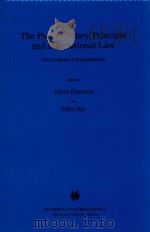
- The Precautionary Principle and International Law The Challenge of Implementation
- 1996 Kluwer Law International
-

- Germany's Panzer Arm
- 1997 Greenwood Press
-

- OFFICER'S COMPANION IN ADMINISTRATION AND LAW
- 1979 EASTERN BOOK COMPANY
-
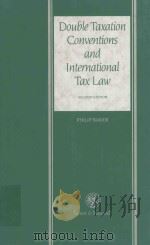
- DOUBLE TAXATION CONVENTIONS AND INTERNATIONAL TAX LAW
- 1994 LONDON Sweet and Maxwell
-
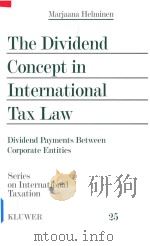
- The Dividend Concept in International Tax Law Dividend Payments Between Corporate Entities
- 1999 Kluwer Law International
-
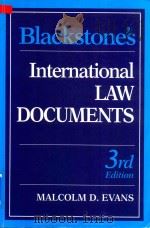
- Blackstone's International Law Documents Thied Edition
- 1991 Blackstone Press
-

- THE PEOPLE'S WELFARE LAW AND REGULATION IN NINETEENTH-CENTURY AMERICA
- 1996 THE UNIVERSITY OF NORTH CAROLINA PRESS
-

- INHERITANCE TAX FORMERLY CAPITAL TRANSFER TAX
- 1986 PITMAN PUBLISHING LTD.
-

- CHANGING TAX LAW LAW IN EAST AND SOUTHEAST ASIA TOWARDS THE 21ST CENTURY
- 1997 KLUWER LAW INTERNATIONAL
提示:百度云已更名为百度网盘(百度盘),天翼云盘、微盘下载地址……暂未提供。➥ PDF文字可复制化或转WORD
